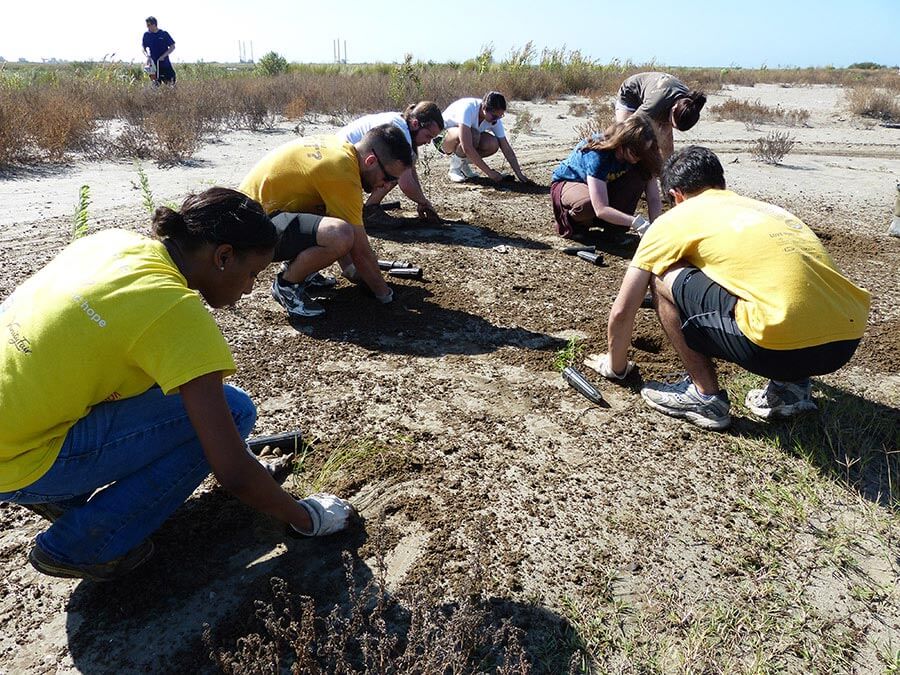 Ridges were formed as the annual flooding of rivers and their distributary streams deposit coarse sediments closest to their banks.
Ridges were formed as the annual flooding of rivers and their distributary streams deposit coarse sediments closest to their banks.
As time went on, theses natural levees rose higher than the surrounding wetlands. Due to their height over the marsh, trees grew. These trees provided forage and cover for resident animals and critical stopover habitat for migrating birds. These forested areas also acted as speedbumps for approaching storm surges. Unfortunately, these ridges are also subsiding and disappearing at an alarming rate.
Ridge restoration takes place when dredged sediment is used to reconstruct elevated ridges where trees can grow. The sediment is piled up into tall, linear features rather than spread out. The “crown” of the ridge is planted with native woody tree species selected for their hardiness and habitat value. A marsh “apron” is then constructed alongside the ridge to protect it and to provide additional wetland habitat.

